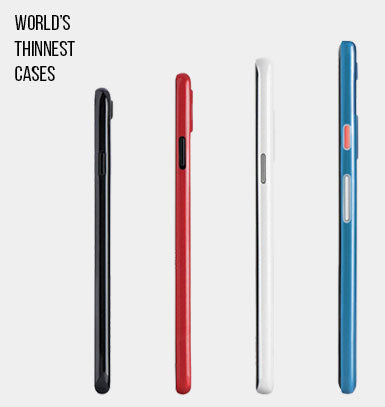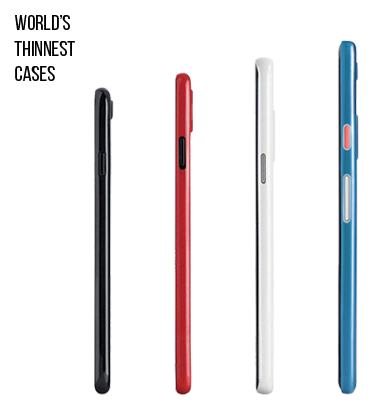Glass vs Plastic Screen Protectors: What You Should Know

Like you, your smartphone is always on the go. From pocket to briefcase, backpack to purse, there are multiple opportunities for it to sustain damage every day. While your smartphone probably features a hard Gorilla Glass screen, it’s not indestructible. Everyday wear and tear from contact with keys, countertops, and other hard surfaces can degrade the touchscreen, and drops and bumps can lead to cracks or screen breakage. A cracked, scratched or broken touchscreen isn’t just unsightly – it can interfere with even the most basic of your cell phone functions. For example, a recent study reported that 27 percent of smartphone owners with cracked screens weren’t able to use apps, and almost thirty percent reported difficulty using specific keyboard letters.
Unfortunately, screen replacements can be pricey, especially for high-end smartphones like the Samsung Galaxy S7 Edge or the iPhone 6s. The good news is that screen protectors are relatively inexpensive, and can reduce the chances of damage to your device. If you are considering purchasing a screen protector, you’ve probably wondered which is the better option: tempered glass or plastic? By carefully weighing the benefits and drawbacks of each, you’ll be able to choose which is the best protection option for you.
Protection
Plastic
Thinner than tempered glass protectors, at typical thicknesses of 0.1mm to 0.2mm, plastic screen protectors are more prone to scratching and protection failure than glass. However, there are various grades of plastic screen protector quality. For example, the Ultimate Shield’s Invisible Film is military grade – the same type of film used to protect military devices and equipment, making it extremely durable. Additionally, while some plastic screen protectors only cover the touchscreen, others offer coverage for the sides and back, with cutouts to make buttons and ports accessible. Plastic offers significant resistance to scratches and surface wear and tear, but not a lot against impact damage.
Tempered Glass
Tempered glass screen protectors are thicker and stronger than typical plastic screen protectors. Unlike regular glass, tempered glass won’t shatter, so if the protector takes the brunt of an impact, it breaks into rounded shapes rather than dangerous shards. At an average thickness of 0.3mm to 0.5mm, they offer more protection against visible scratching to the touchscreen as well as more impact resistance to prevent cracking and breaking of your touchscreen. ,
Price
Plastic
Inexpensive, low-quality plastic screen protectors that cover only the touchscreen surface can be purchased in bulk for a few dollars, which makes it easy to keep backup screen protectors on hand. Higher quality plastic screens that offer more protection can cost from £6 to £13 ($8-$17).
Tempered Glass
Tempered glass screen protectors are generally sold individually, and typically are significantly more expensive than their plastic competitors – but still very affordable. While many high-quality tempered glass protectors run about £11 to £15.99 ($15-$21), you could spend £25 ($33) or more for a single tempered glass protector.
Installation
Plastic
Different plastic screen protectors require different installation techniques. Some are applied using water, and others utilize adhesives. While the application is generally easy for some, others are more difficult, and some styles may require the use of flexing, a squeegee or tape to help with precise placement on curve-edged screens like the iPhone 6. Any small mistake can result in bubbles or bumps on the screen surface. One perk is that they can be cut or trimmed to fit any smartphone.
Tempered Glass
Tempered glass screen protectors are custom-sized to fit each phone model. To install, simply remove the covering from the adhesive side of the protector, align the protector, carefully place it on the touchscreen, and then apply gentle pressure to remove any bubbles.
User Experience
Plastic
Plastic or touchscreen protectors come in a variety of textures ranging from matte to smooth, however, adding a plastic screen protector to a phone that has a Gorilla Glass touchscreen may change its surface texture, causing drag and friction. Some plastic protectors may discolor or impair the screen visibility slightly. Because plastic touchscreens are porous and scratch easily, they can be less hygienic and harder to clean than glass.
Tempered Glass
Tempered glass screen protectors with an oleophobic coating have a texture similar to the original screen, which makes finger-gliding and scrolling easier than on plastic. Tempered glass is easy to clean, and the coating resists fingerprints and smudging. Because of the thickness of the glass, the home buttons of some models may seem more indented. The crystal-clear glass provides more screen visibility and brightness than plastic protectors.
When it comes to protecting your smartphone, both plastic and tempered glass screen protectors are better options than dealing with the expense of repairs or the replacement of a cracked or broken phone screen. For more information about how to protect your specific smartphone make and model, check out Ultimate Shield’s quality screen protectors. We offer free shipping, and a 100% satisfaction guarantee.
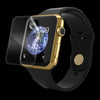 Apple Watch Series 1 / 2 / 3 Invisible Film Screen Protector
Apple Watch Series 1 / 2 / 3 Invisible Film Screen Protector 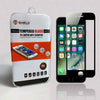 Apple iPhone 7/8/SE (Black) Tempered Glass Screen Protector
Apple iPhone 7/8/SE (Black) Tempered Glass Screen Protector 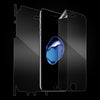 Apple iPhone 7/8/SE Invisible Film Screen Protector
Apple iPhone 7/8/SE Invisible Film Screen Protector 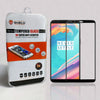 OnePlus 5T Tempered Glass Screen Protector (Black)
OnePlus 5T Tempered Glass Screen Protector (Black) 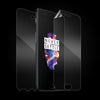 OnePlus 5 Invisible Film Screen Protector
OnePlus 5 Invisible Film Screen Protector 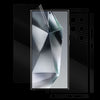 Samsung Galaxy S24 Ultra Invisible Film Screen Protector
Samsung Galaxy S24 Ultra Invisible Film Screen Protector 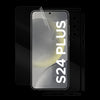 Samsung Galaxy S24 Plus Invisible Film Screen Protector
Samsung Galaxy S24 Plus Invisible Film Screen Protector 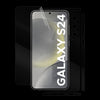 Samsung Galaxy S24 Invisible Film Screen Protector
Samsung Galaxy S24 Invisible Film Screen Protector 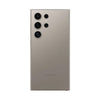 Ultimate Thin Case for Samsung Galaxy S24 Ultra
Ultimate Thin Case for Samsung Galaxy S24 Ultra 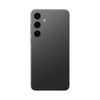 Ultimate Thin Case for Samsung Galaxy S24 Plus
Ultimate Thin Case for Samsung Galaxy S24 Plus 